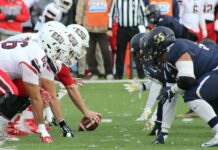The visuals on a website greatly enhance its appeal, but they can also be the main culprit behind sluggish loading times. Therefore, it becomes important to understand how to efficiently optimize images for the web, striking a balance between quality and speed. Many website owners and bloggers usually ignore this, but it is very important.
So, let us show you the importance of image optimization and how to optimize images for the web to achieve it and introduce some top-notch tools to aid you in the process.
Why There Is a Need for Image Optimization?
When it comes to the overall weight of a web page, images often emerge as the heaviest elements. A startling insight from the HTTP Archive underscores this fact: around 75% of a webpage’s weight, on average, comes from unoptimized images. Such unnecessary heaviness can adversely affect the performance of a website, leading to the following:
- Slower Website Performance: Large images take longer to load, delaying the page from being displayed.
- Increased Bounce Rate: Visitors are likely to leave if the page doesn’t load swiftly.
- Diminished Search Engine Rankings: Page load time is a crucial ranking factor for search engines like Google.
Hence, now you know the importance of image optimization, let’s explore how to optimize images for the web.
Strategies for Effective Image Optimization
The primary goal is to reduce image file sizes while retaining their quality. Here’s a structured approach:
Selecting the Appropriate File Type
- JPEG: Ideal for photographs or detailed visuals.
- PNG: Suited for transparent images or straightforward graphics.
- GIF: The go-to for simple animated graphics.
Embracing Advanced Image Formats
Progressive JPEGs: These load incrementally, initially presenting a low-quality image that gradually sharpens as more data is loaded.
Next-Generation Formats: WebP and AVIF offer superior compression ratios compared to traditional JPEGs and PNGs, often without noticeable quality degradation.
Image Caching
By storing often-used images in a cache, returning visitors experience quicker load times since the browser can fetch the image from local storage instead of re-downloading it.
Effective Image Compression:
- Lossless Compression: This method refines the image file by removing redundant data, preserving the original quality.
- Lossy Compression: More aggressive than its counterpart, lossy compression yields a much smaller file at the expense of some quality. It’s a matter of finding the right balance between size and clarity.
Right-Sizing Images
Ensure images fit their display size. Oversized images waste bandwidth and slow down loading times. You can resize images using Microsoft PowerPoint as well.
Efficient Image Delivery
Leveraging an image content delivery network (CDN) ensures that images are fetched from a location closer to the visitor, speeding up the retrieval process.
Top Tools to Facilitate Image Optimization
The digital landscape offers a plethora of tools to assist in refining your images for web use. Some standout options include:
- Optimizilla
- Tiny PNG
- JPEG Optimizer
- io
- Compress Now
- io
- ImageRecycle
- Ezgif
Final Words
The vitality of image optimization cannot be overstated in today’s web environment. A conscious effort to appropriately format, compress, cache, and deliver images can drastically uplift your website’s speed and user experience. While the technicalities might seem daunting, optimizing your website images becomes a straightforward and rewarding process with the right strategies and tools in place.






